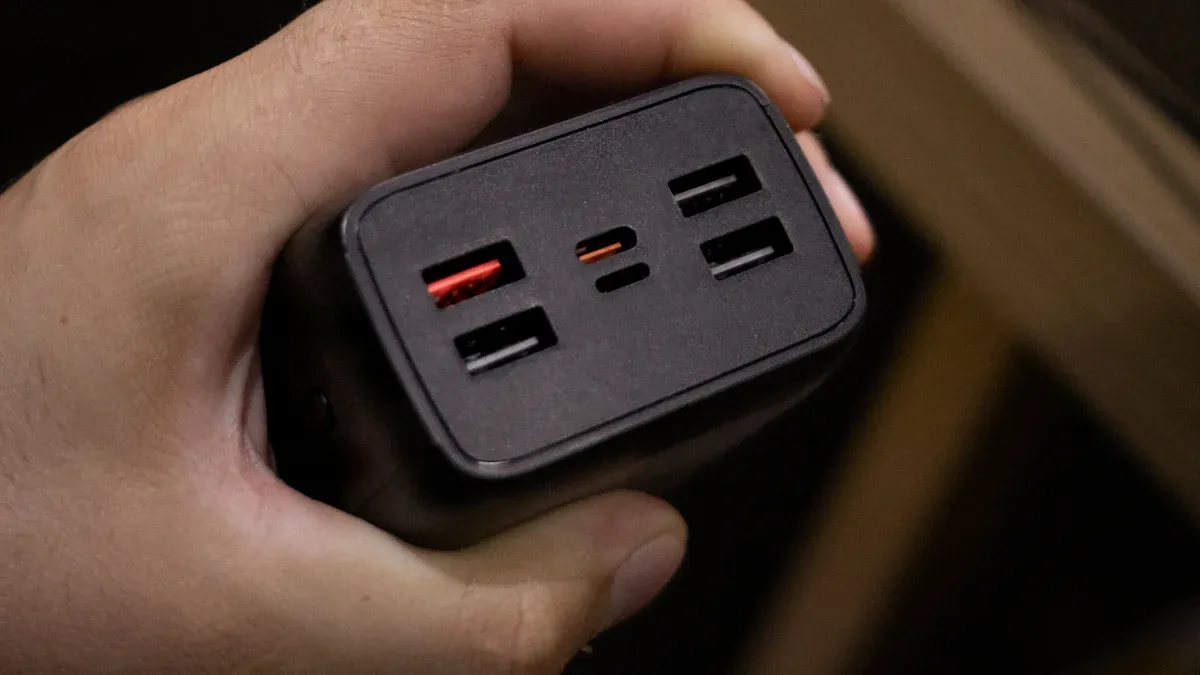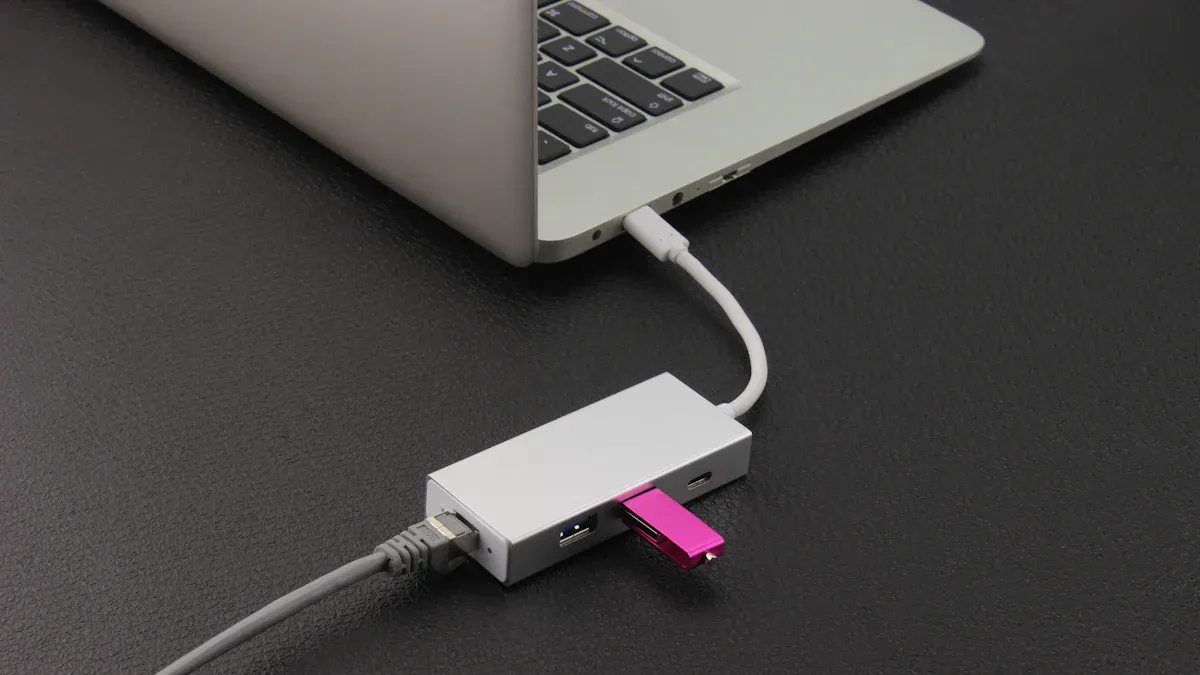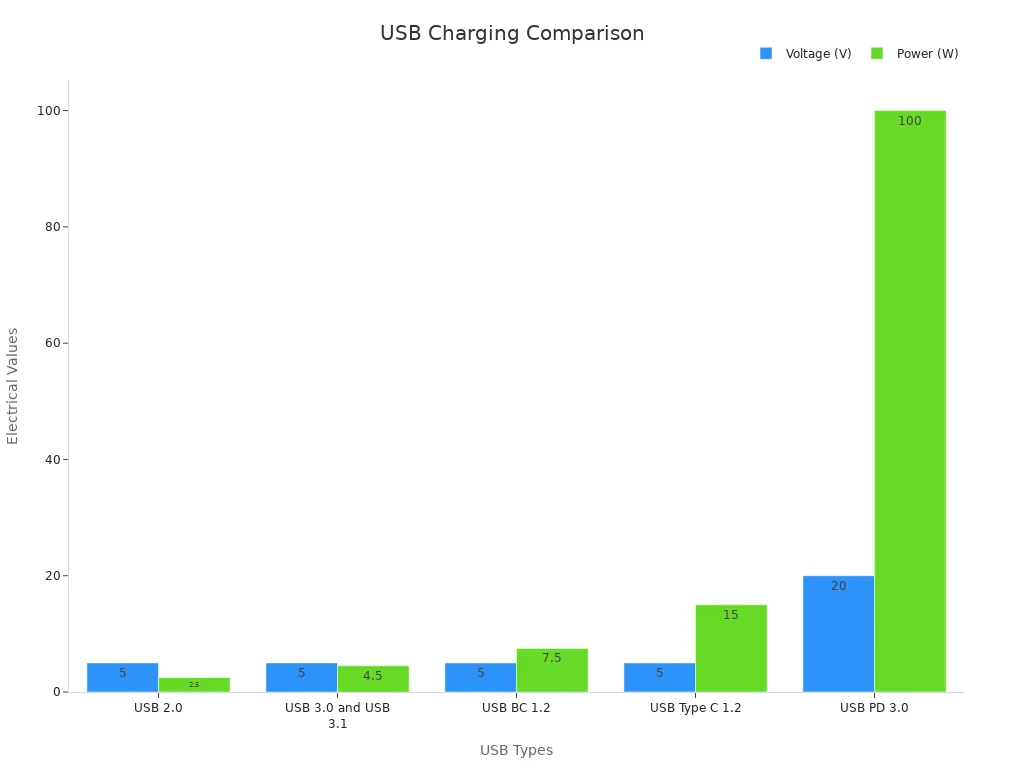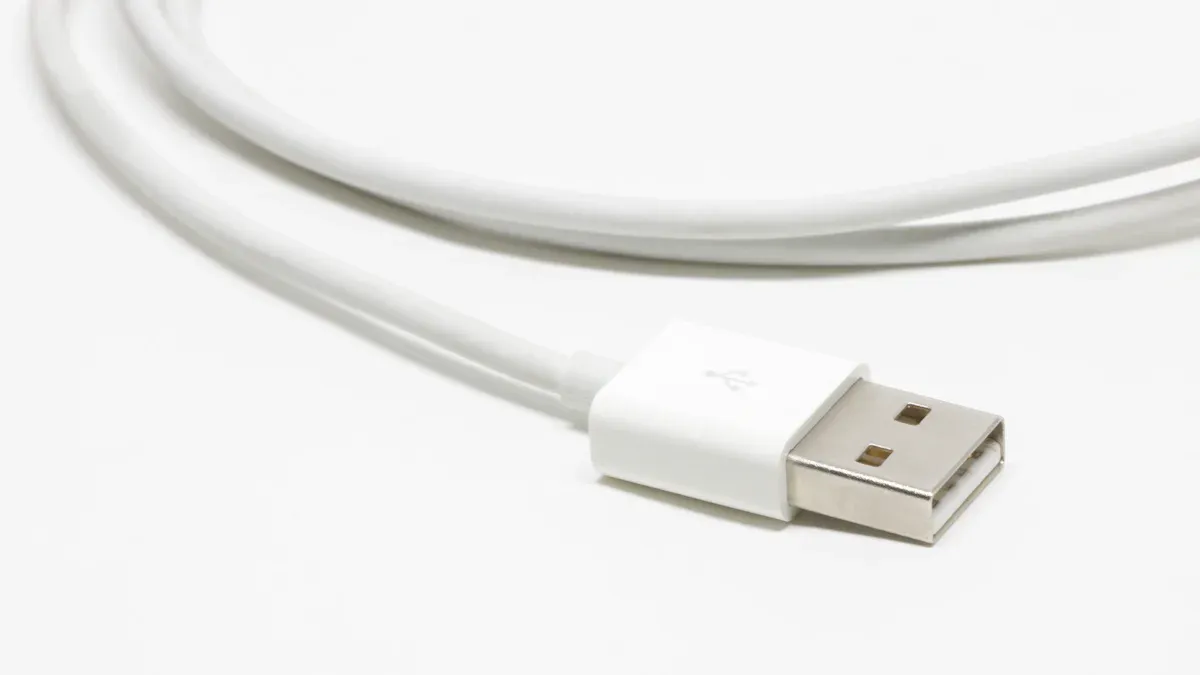Have you ever wondered why USB-C to USB-C cables are becoming so popular? These cables aren’t just trendy—they’re powerful. USB-C technology has transformed how you charge your devices. With faster speeds and greater efficiency, it’s no surprise that the USB-C market is expected to grow from $12.5 billion in 2023 to $35.2 billion by 2032. That’s a massive leap! These cables also stand out for their ability to handle higher wattage, making charging quicker and more reliable. Plus, their wide compatibility with modern gadgets means you can use one cable for almost everything. Isn’t that convenient?
Why USB-C to USB-C Cables Are Faster
When it comes to charging your devices, speed and efficiency matter. USB-C to USB-C cables are designed to deliver both, making them the go-to choice for modern gadgets. But what makes these cables so much faster? Let’s break it down.
Power Delivery (PD) and Its Role in Fast Charging
Power Delivery (PD) is a game-changer for fast charging. This technology allows USB-C to USB-C cables to deliver higher power levels safely and efficiently. Here’s how it works:
| Feature | Explanation |
|---|---|
| Higher Voltage Support | USB PD supports voltages up to 48 volts, enhancing charging speeds and power throughput. |
| Dynamic Power Negotiation | Ensures devices charge at optimal rates while maintaining safety and efficiency. |
| Flexible Power Management | Allows negotiation of power transfer rates, starting at 5V and scaling up to 240W. |
With PD, your devices get exactly the amount of power they need. For example, an iPhone XR can charge from 0% to nearly 50% in just 30 minutes using a USB-C charger. Compare that to a standard 12W charger, which only reaches about 35% in the same time. That’s a significant difference, right?
Higher Wattage and Voltage Support
USB-C to USB-C cables also stand out because of their ability to handle higher wattage and voltage. This means they can charge everything from your phone to your laptop without breaking a sweat. Take a look at how USB-C compares to older standards:
| Specification | Maximum Voltage | Maximum Current | Maximum Power |
|---|---|---|---|
| USB 2.0 | 5V | 500mA | 2.5W |
| USB 3.0 and USB 3.1 | 5V | 900mA | 4.5W |
| USB BC 1.2 | 5V | 1.5A | 7.5W |
| USB Type C 1.2 | 5V | 3A | 15W |
| USB PD 3.0 | 20V | 5A | 100W |
As you can see, USB-C cables with Power Delivery can handle up to 100W of power. That’s enough to charge a laptop or even power a device requiring 12V at 3A, which wouldn’t work with a standard USB cable. This versatility makes USB-C to USB-C cables a must-have for anyone juggling multiple devices.
Impact of USB-C Data Transfer Rates on Charging Efficiency
Did you know that USB-C cables don’t just excel at charging? They also support faster data transfer rates, which indirectly improves charging efficiency. Here’s why: when a cable can handle both high-speed data and power delivery, it reduces the overall time you spend waiting for your device to be ready.
For instance, USB-C cables can transfer data at speeds of up to 10Gbps, depending on the version. This means you can sync files or update your device’s firmware while charging, without any noticeable slowdown. It’s like multitasking for your gadgets!
Additionally, the advanced design of USB-C to USB-C cables minimizes energy loss during power transfer. This ensures that more of the power you’re paying for actually reaches your device, making the charging process not just faster but also more efficient.
USB-C to USB-C Cables vs. Other Cable Types
USB-C to USB-C vs. USB-A to USB-C
You might wonder how USB-C to USB-C cables differ from USB-A to USB-C cables. The answer lies in their design and performance. USB-C to USB-C cables feature identical connectors on both ends, allowing faster data transfer and charging speeds. In contrast, USB-A to USB-C cables are limited by the older USB-A connector, which supports lower power and slower data rates.
For example, USB-A connectors typically max out at 2.5W or 4.5W of power, while USB-C to USB-C cables can handle up to 100W with Power Delivery. This means you can charge a laptop or a phone much faster with USB-C to USB-C. Plus, USB-C’s reversible design eliminates the frustration of plugging it in the wrong way.
Advantages Over Micro-USB and Lightning Cables
USB-C to USB-C cables also outperform Micro-USB and Lightning cables in several ways:
- Faster Data Speeds: USB-C supports USB 3.1 or USB 4, enabling data transfer rates in gigabits per second. Micro-USB, on the other hand, is stuck at USB 2.0 speeds, which are much slower.
- Higher Power Delivery: USB-C cables can deliver significantly more power, making them ideal for fast charging. Lightning cables, while efficient for Apple devices, don’t match USB-C’s versatility.
- Universal Compatibility: USB-C works with a wide range of devices, from laptops to smartphones, while Micro-USB and Lightning are limited to specific ecosystems.
These advantages make USB-C to USB-C cables the clear winner for modern tech users.
Why USB-C to USB-C Is the Modern Standard
USB-C to USB-C cables have become the gold standard for charging and connectivity. They offer fast charging, allowing you to power up your devices quickly—up to 50% in just 30 minutes. This is a lifesaver when you’re in a rush.
But USB-C isn’t just about speed. It also supports video output, letting you connect to external displays without extra adapters. Major tech companies like Apple and Google have embraced USB-C, ensuring it remains the standard for future devices.
Another reason USB-C to USB-C cables stand out is their ability to consolidate power, data, and video into one cable. This reduces clutter and simplifies your setup. Plus, USB-C’s bidirectional power feature lets devices charge each other, adding even more flexibility.
With all these benefits, it’s no surprise that USB-C to USB-C cables are the go-to choice for modern charging cables.
Choosing the Right USB-C to USB-C Cable
When it comes to picking the perfect USB-C to USB-C cable, you’ve got plenty of options. But not all cables are created equal. Choosing the right one can make a big difference in charging speed, durability, and overall performance. Let’s break down what you should look for.
Importance of USB-IF Certification
USB-IF certification is like a stamp of approval for USB-C cables. It ensures that the cable meets strict safety and performance standards. Certified cables undergo rigorous testing to verify their ability to handle high power levels and fast charging technologies like Power Delivery.
Here’s what USB-IF certification guarantees:
– Safety: Certified cables reduce the risk of overheating or fire, especially for power sources above 100W.
– Performance: They support the latest USB-C specifications, including 240W power delivery and high-speed data transfer.
– Reliability: These cables include E-markers, which communicate power ratings and ensure compatibility with your devices.
When shopping for a USB-C to USB-C cable, look for the USB-IF logo on the packaging. It’s a simple way to ensure you’re getting a high-quality product that won’t let you down.
Ensuring Device Compatibility
Not all USB-C to USB-C cables work with every device. Before buying, you need to check if the cable matches your device’s requirements. Here’s what to consider:
– Power Delivery Support: If your device supports fast charging, make sure the cable does too. Look for features like Quick Charge 3.0 or Power Delivery.
– Data Transfer Rates: For tasks like syncing files or transferring large videos, choose a cable that supports USB 3.1 Gen 1 (5 Gbps) or Gen 2 (10 Gbps).
– Device-Specific Needs: Some devices, like laptops or gaming consoles, require higher wattage. Ensure the cable can handle the power demands of your device.
A little research goes a long way. By matching the cable to your device’s specs, you’ll get the best performance and avoid compatibility issues.
Evaluating Build Quality and Durability
Durability matters, especially if you’re using your USB-C to USB-C cable daily. A poorly made cable can fray, break, or stop working altogether. To ensure longevity, pay attention to these factors:
– Braided vs. Non-Braided: Braided cables are more resistant to wear and tear. They’re a great choice if you need something that lasts.
– Connector Quality: High-quality connectors ensure a secure fit and reduce the risk of damage over time.
– Longevity Tests: Look for cables that have passed durability tests as part of the USB-IF certification program.
Investing in a well-built cable saves you money in the long run. Plus, it ensures consistent charging and data transfer performance.
Selecting the Right Cable Length for Your Needs
Cable length might seem like a small detail, but it can impact your charging experience. Too short, and you’re stuck sitting next to the outlet. Too long, and you’re dealing with unnecessary clutter. Here’s how to choose the right length:
– Measure the Distance: Think about where you’ll use the cable. For example, if you’re charging your phone in the car, measure the distance between the charging port and the power outlet.
– Standard Lengths: Most USB-C to USB-C cables come in lengths like 3ft, 6ft, or 10ft. Choose one that fits your setup without excess slack.
– Consider Obstacles: If you’re dealing with unusual setups, like a desk with limited outlets, opt for a longer cable to avoid inconvenience.
The right length makes charging more convenient and keeps your space organized. It’s a small detail that can make a big difference.
USB-C to USB-C cables have redefined charging and data transfer. They deliver up to 100W of power with power delivery, support fast charging, and achieve data transfer speeds up to 40 Gbps. These cables outperform older charging cables in speed, versatility, and performance. Investing in one ensures your phone and other devices charge faster and more efficiently.
FAQ
What makes USB-C to USB-C cables better for fast charging?
USB-C to USB-C cables support higher wattage and Power Delivery (PD). This means your devices charge faster and more efficiently compared to older cable types.
Can I use any USB-C to USB-C cable with my device?
Not all cables are compatible. Check for USB-IF certification and ensure the cable supports your device’s power and data requirements for the best performance.
Tip: Always match your cable’s wattage and data speed with your device’s specifications to avoid issues.
Do USB-C to USB-C cables work with older devices?
Yes, but only if the older device has a USB-C port. For devices with USB-A or Micro-USB ports, you’ll need an adapter or a different cable.




